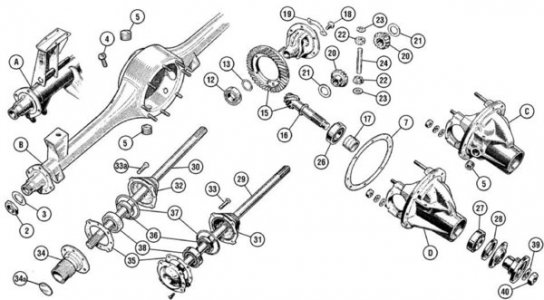- Joined
- Oct 21, 2017
- Messages
- 504
The (bevel) gears on the end of the halfshafts
Half-shafts don't have gears on the ends, they have splines, these fit into sockets in the differential, half-shaft splined ends are not driven directly by any gear.
The (bevel) gears on the end of the halfshafts

